The Advantages of Telecentricity
Authors: Gregory Hollows, Nicholas James
This is Section 4.1 of the Imaging Resource Guide.

The ability to quickly perform repeatable, high-accuracy measurements is critical to maximizing the performance of many machine vision systems. For such systems, a telecentric lens allows the highest possible accuracy to be obtained. This section discusses the unique performance characteristics of telecentric lenses and how telecentricity can impact system performance.
Zero Angular Field of View: Parallax Error Elimination
Conventional lenses have angular fields of view (AFOV) such that as the distance between the lens and object increases, the magnification decreases. This is how human vision behaves and contributes to our depth perception. This AFOV results in parallax, also known as perspective error, which decreases accuracy, as the observed measurement of the vision system will change if the object is moved (even when remaining within the depth of field [DOF]) due to the magnification change. Telecentric lenses eliminate the parallax error characteristic of conventional lenses by having a constant, non-angular FOV; at any distance from the lens, a telecentric lens will always have the same FOV. See Figure 1 for the difference between a non-telecentric and a telecentric FOV.
A telecentric lens’s constant FOV has both benefits and constraints for gauging applications. The primary advantage of a telecentric lens is that its magnification does not change with respect to depth. Figure 2 shows two different objects at different working distances (WD), imaged both by a fixed focal length (non-telecentric) lens (center) and a telecentric lens (right). Note that in the image taken with a telecentric lens, it is impossible to tell which object is in front of the other. With the fixed focal length lens, it is quite obvious that the object that appears smaller is positioned farther from the lens.
While Figure 2 is drastic in terms of a WD shift, it illustrates the importance of minimizing parallax error. Many automated inspection tasks are imaging objects that move through the FOV of an imaging system, and the position of parts is rarely perfectly repeatable. If the WD is not identical for each object that the lens is imaging, the measurement of each object will vary due to the magnification shift (see Resolution to learn more about magnification and how it is defined). A machine vision system that outputs different results based on a magnification calibration error (which is unavoidable with a fixed focal length lens) is a non-reliable solution and cannot be used when high precision is necessary. Telecentric lenses eliminate the concern about measurement errors that would otherwise occur due to factors such as a vibrating conveyor or inexact part locations.

Figure 1: FOV comparison of a conventional and telecentric lens. Note the conventional lens’s AFOV and the telecentric lens’s zero angle FOV.

Figure 2: The AFOV of the fixed focal length lens translates to parallax error in the image and causes the two cubes to appear to be different sizes.
Telecentric Lenses and Depth of Field
It is a common misconception that telecentric lenses inherently have a larger DOF than conventional lenses. While DOF is still ultimately governed by the wavelength and f/# of the lens, it is true that telecentric lenses can have a larger usable DOF than conventional lenses due to the symmetrical blurring on either side of best focus. As the part under inspection shifts toward or away from the lens, it will follow the AFOV (or the chief ray) that is associated with it. In a non-telecentric lens, when an object is moved in and out of focus, the part blurs asymmetrically due to parallax and the magnification change that is associated with its AFOV. Telecentric lenses, however, blur symmetrically since there is no angular component to the FOV. In practice, this means that features such as edges retain their center of mass location; an accurate measurement can still be made when the object is beyond best focus as long as the contrast remains high enough for the algorithm being used by the machine vision system to function properly.
While it may seem counterintuitive, blur can be used advantageously in certain applications with telecentric lenses. For example, if a machine vision system needs to find the center location of a pin, as shown in Figure 3a, the transition from white to black is quite sharp when the lens is in focus. In Figure 3b, the same pin is shown slightly defocused.
Looking at a plot of the image gray levels from a line profile taken across the edge of the part, as in Figure 4, the slope of the line is much shallower for the slightly defocused image, as the pin edge is spread over more pixels. Due to the symmetric blurring of the telecentric lens, this blur is still usable as the centroid has not moved and the amount of sub-pixel interpolation needed is decreased. This reduces sensitivity to gray level fluctuations caused by sensor noise and allows the pin center location to be found more reliably and with higher repeatability.

Figure 3: The same pin imaged both in and out of focus. Note that the transition from white to black covers many more pixels when the lens is slightly out of focus (b), which can be advantageous.














 Previous Section
Previous Section 
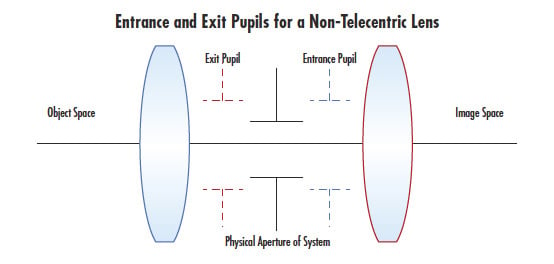
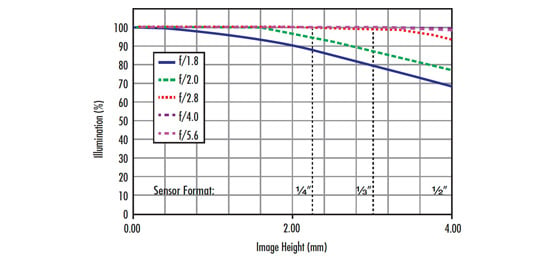
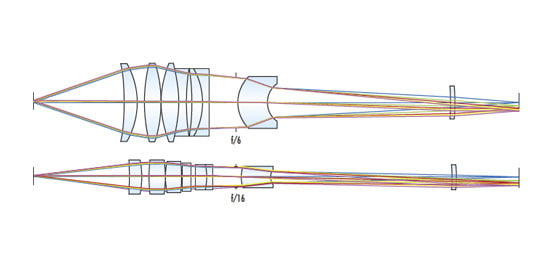

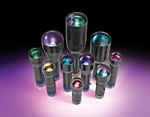

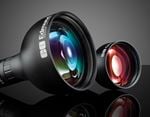
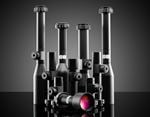

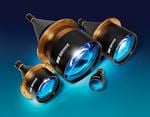
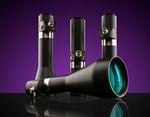
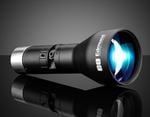
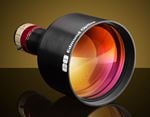
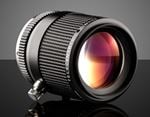
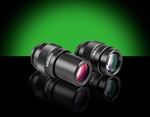

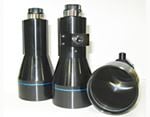

or view regional numbers
QUOTE TOOL
enter stock numbers to begin
Copyright 2023, Edmund Optics India Private Limited, #267, Greystone Building, Second Floor, 6th Cross Rd, Binnamangala, Stage 1, Indiranagar, Bengaluru, Karnataka, India 560038
California Consumer Privacy Acts (CCPA): Do Not Sell or Share My Personal Information
California Transparency in Supply Chains Act